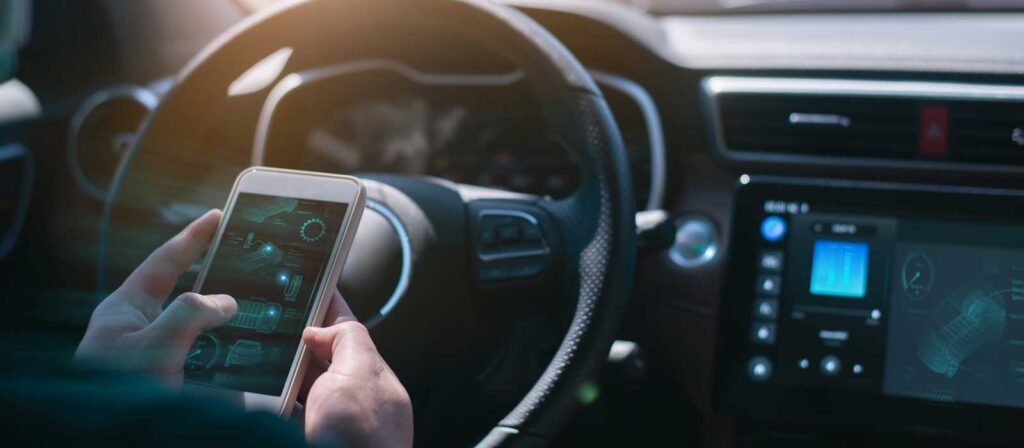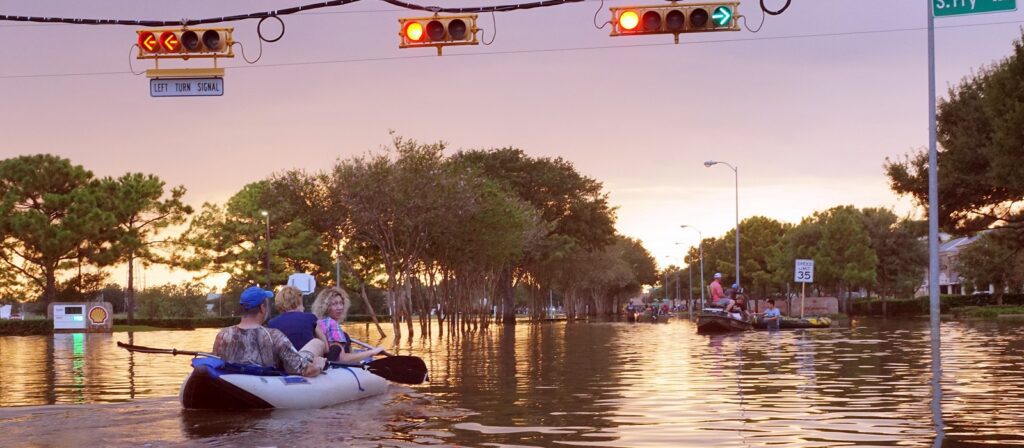Ben Telfer:
Hello everyone, and welcome to today’s ICMIF webinar. Today sees the fifth episode in ICMIF’s “The digital mutual” series featuring the case study of LB Group in Denmark. I’d like to introduce today’s speakers from LB Group. Firstly, we have Maria Jensen who is Head of Process & Business Design. We also have Ann Krag who’s Head of Innovation. Maria, Ann, thank you for joining us today…
Maria Jensen:
Ben, thank you very much for the introduction and for organizing this webinar. On behalf of my wonderful colleague Ann who’s my co-pilot, I would like to thank you all for joining. In a few seconds, we’ll just introduce you to the agenda. As been said, if you have any questions that we do not answer during this presentation, or have time to discuss during the Q&A session in the end, please feel free to contact either one of us. You’ll find our email addresses available at the end of this slide deck, which I believe will be made available just shortly after this webinar.
I head up the Process & Business Design Department within the LB Group. I have a background in technology and innovation management focused on attachment of the new functions.
Ann Krag:
My name is Ann Kristine Krag and I am head of innovation and responsible for innovation at prevention activities in LB insurance, or LB group. I have been in the insurance industry for about 15 years and my focus has all the years been on how we can make a better life for our customers, and I have been mainly working with solutions in the areas of service and prevention. Before we go to the agenda, a few words about LB Group. If you don’t know us, we are the third largest insurance company here in Denmark in the private market. We have around 400,000 members. What’s special for LB is that only people in certain professions, such as teachers and nurses can become a member, and we appear mutual, as you all are.
That means that we pay back money to our members if we earn money. We have the highest loyalty score among insurance companies in Denmark and our products have won a lot of awards. We’re very proud of that for the best and cheapest insurance products. And actually in 2019, we also won and for the best digital customer solution, and actually it was before we implemented our new digital solution. So it was quite a surprise.
Maria Jensen:
So I’ll just introduce you to the agenda. In the following 20 to 25 minutes, Ann and I will introduce you, for the next minutes, first, Ann will introduce you to the context in which LB Group operate. That’s the one we have headlined as the numbers. Afterwards, I’ll walk you through the stage of digitization in LB, and finally, Ann will present a case on digitization in LB before wrapping up the seminar with the Q&A’s.
Ann Krag:
Yes. Here in Denmark, we are known for our high income tax. Actually, our average income tax is 45%, but in return, the Danish citizens gets free education, free healthcare, benefit during maternity leave, and a high digitization public sector. And despite the high tax rates and the big public sector in Denmark, we are among the wealthiest and the happiest nation in the world. And actually scientists points out that the highest social trust probably is the secret. One way to measure social trust is to ask people how likely they are to trust strangers. Three out of four Danes trust people they have never met before and we think that high social trust give us a competitive advantage since it implies less control and lower cost on administration processes.
Mental trust is also a core in our sectors, since our customer buy a product they may never use. So actually speaking about trust, do any of you know who is the guy on the photo? Actually, it’s our crown Prince of Denmark who taking his into kindergarten in a cargo bike driving here in Copenhagen. And speaking of digitization and home, Denmark is the most digital society in the world, according to EU digital economy and society index, and it started long ago. Actually, it started in ’68 when Denmark introduced the CPR database, which holds every person who lives in Denmark. The database has had a major impact on the digitization here in Denmark. Danish citizens have adopted technology and citizens expect the government service to be digital by default supported by web and mobile in parallel. Actually in Denmark, it is mandatory to communicate with the public sector through a service called Digital Post.
This means that all interactions between the citizen and the public is done electronically by using secure email, instead of sending letters. Digital Post is also available for the private sector to use. For example, insurance companies as LB Group, financial institutions and schools also use Digital Post in their communication with the customers and members. This can only be done because there’s a high degree of smartphones and internet penetrations. 88 of all Danes actually got almost one smartphone and 94 have internet at their homes and use the internet daily, and three out of four Danes have at least one connected IT devices such as a connected car, smart home, things like that.
Maria Jensen:
So, taking a look at LB and how to make LB digital, in our current strategy, the 2022 strategy was kicked off among all LB employees back in September ’19. The picture on your right hand side actually captures all of us attending that event. So I guess your question is, “What is LB’s digital strategy?” Well, LB has a brave and disruptive purpose, a purpose which was launched on the third day in September. The purpose is to make insurance redundant. On that part of becoming digital, is only one step among plenty others. Therefore, digitization is not a separate subject, nor a goal in itself, but merely a necessity on which all our initiatives are built.
On the next slide, I’ll take you through an example of what we do in terms of digitization in LB. As Ann said, our members have high digital expectations, and also told you that 88% of the Danish population possesses a smartphone, which is pretty much everyone, considering that 10% of the population is younger than 10 years. Consequently, a common claim for LB is smartphone damage. For a member to have claims processed, as the very first thing, it has to fill out a form on the LB web portal. Then the core system retracts that information needed from that side and then push back a new phone for a member, which is actually provided by a third party to repair, or alternatively, procurement of a substitute smartphone.
For all this to happen seamlessly, multiple integrations are needed. So the very basic illustration that you’re looking at, at your left hand side tries to illustrate how these integrations works. So I’ll walk you through, and that is another way of communicating the LB system landscape. I’ll try to explain that with a background, so if you look at that illustration, you see the member in the very center, which is basically how we always want to look at our members in LB. These are the ones that we center everything around. In the first blue ring, you have the LB world. This is where the member interacts with us on the open pages on the web, which you can all access. And then on the personal portal. Also, the member interacts with some of our partners through seamless links and these links to application, which in some instances, are third party providers only, or sometimes these are application that developed together with our partners, for example, our industry organization.
What you see in the upper right hand side of the blue ring is the Danish public sector. No matter what ever happens, no matter how we interact with our member, our member is core system, which connects to all of us, would always have to interact through either one of these components, and obviously that makes it quite challenging, but it also gives us great opportunities with having such a server. In terms of advantages, we are internally, very simple in the way that we have only one product. And we also have one price, which means that amongst our four brands, we do not differentiate whatever solutions that we offer to our members. Also, we have collected everything in one insurance cost system. However, the external complexity is quite significant. The APIs or integration, that are just what we showed beforehand, they total more than 30. In addition to that, we have different obligatory industry solutions that we have to connect to also, and then we have the member expectations. It’s probably the same within your parts of the world too.
But basically, our members expect the same solutions as we see within the fast moving, consumer good markets. So it’s seamless, real time solutions. That makes us look at new opportunities, and the answer for these opportunities are de-coupled solutions to support whatever new initiatives that required by the business and expected by the members. Time is the essence. And often we are faced with the fact that our surroundings, they move faster and in a higher pace than we have provided IT solutions traditionally within LP. Also our members, they adapt to new technologies willingly and expect us to do the same. And that has required us to rethink how we develop in a faster pace. And that goes back to how we work with different de-coup solution today, because rather than expect a member to pay a service provided and developed by LB, we rather look to other solutions which are already developed, which we can connect to, so technically our challenge is to make that integration.
Also, I will say, all our sales, they occur either online or via our Danish space internal call centers, which means we do not have a traditional network of sales force, but it does however, require our digital sales solution to work perfectly. Also, as a last example, we have moved away from the one app world towards more responsive design. We have much more focused apps than what we were providing previously. To give you a better understanding of that, Ann will walk you through a case on digitization in LB.
Ann Krag:
As mentioned, technology is changing the way that we interact with our members. Today, we have no frequent dialogue with our members. In fact, we have only a dialogue if the member has an insurable event, buying a house or buying a car or have kids, or if the member has a claim. The new technologies such as a connected home in this case gave us the chance to be more present and relevant in the living of our members. Based on data, we can create interactions and dialogue. And we can, for example, via text message to the member, if the freezer is not closed, or if the humidity in the home is too high, to change something, we have no… Actually, we know the needs of our members before they even know them by themselves. And we can act on the needs without having them contacting us. We just contact them immediately. In that way, we create an easier, more secure everyday life for our members. They know we will contact them if there is anything unusual happens, and actually, we want to become the trusted partner of our members.
We know from several surveys that our members would like to share the data with us. However, it must be on the member’s own terms so that they don’t feel that we are big brother watching you, but instead we want to be a big mother care for you. And we need to remember that some contact points require digital contact. For example, text messages with when the freezer is open, while other contact points still require human contact with the member, such as an accident or things like that. We begin to investigate how smart home or the intelligent home could be used in 2017, and for about two years, we have been working more focused on the smart home concept. There are three important elements in working with smart home to prevent damages. Not just reduce damage cost, but to help our members avoid the hassle that comes with damages, and actually, that’s why we have had our purpose. We want to make insurance refundable because we believe that that’s the best for our members.
The second element is data. Access to data is essential. We hope that in the future data can be used to predict damages. Actually we want to predict them before they even arise. And the third element is improving member relations, becoming more relevant in situations, as I mentioned before., Beside damage and repair, we wish to become a trusted partner for our members. In that, we have one of our smart home solutions of concepts. Here is illustrated. It’s called LB as a service provider, or prevention as a service. As you see, service is a central part of our smart home concept. We believe that offering services in relation to smart home devices, we can become more relevant, but also can be able to contact our members right away. The idea is that we receive a notification from the smart home devices installed in our member’s home.
Then, our member gets the notification and we do in the same time and we contact the member and ask if everything is okay. If the member, they need assistance, we will co-ordinate assistance if needed, and then they will get the help right away. And if the accident or the incident is covered by the insurance, then it will be a usual claim, but if the accident or the incident is, what do you call it? Is not covered by the insurance, then it will be paid by the member by themselves. In that way, we take care of the problem and not just where the insurance covers the accident. And we hope that we can be a trusted partner in this way. The first services is around plumbing and water leak, but later on, we hope and look into other services as carpeting and things like that, but in the first place, it’s water leak that we have focused on.
Maria Jensen:
Well, thank you all very much for listening in on the presentation. I guess we’ll open for Q&A….
Ben Telfer:
Thank you, Maria. Thank you, Ann. Yes, we’ve got a number of questions in already, but people in the audience, if you have any further questions, please send those in. We have a bit of time to ask Maria and Ann these questions. Firstly, how long did your core system implementation last?
Maria Jensen:
Well, I remember in the spring of 2014, we were blueprinting and vendor selections. Obviously it was before me joining LB and then we finalized all migration in the spring of 2019. Or summer…
Ben Telfer:
Which core system did you choose?
Maria Jensen:
We chose a system operated by a partner called Sapiens.
Ben Telfer:
Is there any reason you chose that system over others? Did it fit more perfectly with the LB structure or your objectives?
Maria Jensen:
Yes. Well, several component have been decisive for that specific choice. Amongst others, the way that we wish to collaborate with the system provider. And obviously also a very decisive parameter was how it opened for development of the new products and new solutions for our members.
Ben Telfer:
We have a question here looking about the new insurance solutions, digital insurance solutions that you’ve created. What has been the member feedback? And have you seen any rise in NPS or customer satisfaction ratings after these new solutions?
Ann Krag:
No, we haven’t. Not yet, but we have asked our members isolated on the solution and they was very happy about it and them find it very valuable. We can’t see it in the NPS yet, but hopefully we can in-
Ben Telfer:
But hopefully in the future. Yes, exactly. I have another question here asking about any strategic partnerships that you’ve entered with service providers or start-up companies to have access to this new connected home and smart home IoT technology.
Ann Krag:
Yes. We are working together with two Danish companies in this area. They are not quite start-ups, but they’re not big. They are small Danish companies in this area.
Ben Telfer:
And I should have mentioned that was a two part question. The second part was, if so, how did you choose your partners? And did you consider your mutuality and your mutual structure as an important factor in which partners you were working with?
Ann Krag:
We had the solution that we needed. We have co-created the solution. It wasn’t a finished product, so we have been co-creating the solution together with the partner. And actually, I don’t think we used our mutual… What do we call it? I know that some of our partners, they appreciate that we are mutual. We have all values, other values when we are working together with them, so that’s the case.
Ben Telfer:
A couple of similar questions here, looking at your prevention strategy and your future solutions with prevention as a service. Do you have any other similar solutions in the pipeline or are you testing any other solutions at the moment?
Ann Krag:
Yeah, we have a prototype testing a service platform to check which kind of services our members want us to deliver. So actually we don’t have a running solution yet, but we are testing different services.
Ben Telfer:
And that goes nicely to my next question about, I wondered if you could explain a little bit more about what do you mean when you say you want to make insurance redundant?
Ann Krag:
We believe that nobody wants to have a claim, not a company and not our member. So the best thing that we could do is to help our members to prevent damages, and we want to find solutions for prevention and not only finding solution for prevention, but also trying to use data to find why is the damage occur? Why is the damage happening at all? So we try to use that data to find the reason for the damage.
Ben Telfer:
I know this new prevention strategy is something that LB Group has been working on over the previous few years. How do you think that your mutuality and closeness to your members has helped you develop this strategy?
Ann Krag:
I think because we have a position with our mutual background, we can truly say that we are doing this for our members and not because we just want to earn a lot of money. I think that’s a very strong, what do you call it? Value to bring into this…
Maria Jensen:
I strongly agree because at this very moment in Denmark, there’s media attention around insurance companies being basically just a cash cow. We do recognize it is. However, we are willing to disrupt ourselves, basically, in order to do what we do, to aid our members as just sustaining the life they live on and to assure and prevent damages from happening.
Ben Telfer:
I think that’s a great way of seeing it, disrupting yourself. An insurance company wanting to make insurance redundant, but it definitely fits with the values of being a mutual insurer, looking after your members by preventing claims rather than just protecting and paying claims.
Maria, Ann, thank you so much for your time today for an excellent presentation and some great discussions in the Q&A. As Maria and Ann mentioned, please do get in touch if you’ve got any further questions and would like to hear more about LB’s digital transformation, their new smart home solutions, or just generally about their “making insurance redundant” strategy. I’m sure that will be of great interest to many other ICMIF members.
So a final thank you to Maria and Ann, and I look forward to everybody joining us on a future ICMIF webinars. Thank you and enjoy the rest of your day.
The above text has been produced by machine transcription from the webinar recording. ICMIF has made every effort to ensure that transcriptions are as accurate as possible, however, in some cases some text may be incomplete or inaccurate due to inaudible passages or transcription errors. Listening to or watching the webinar recording will allow you to hear the full text as delivered during the webinar but this is available in English only. Our transcriptions are provided to enable members to select the language of their choosing using the dropdown menu above.





